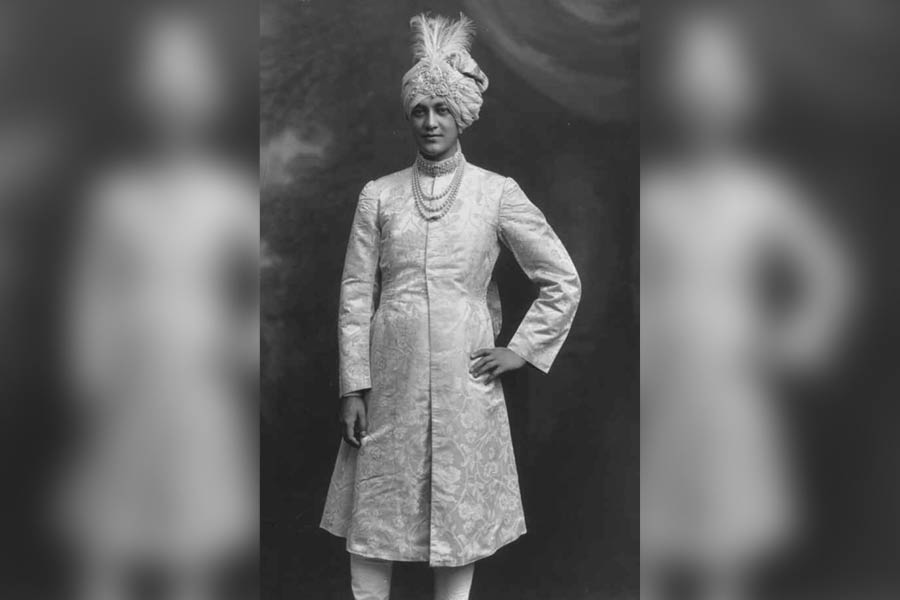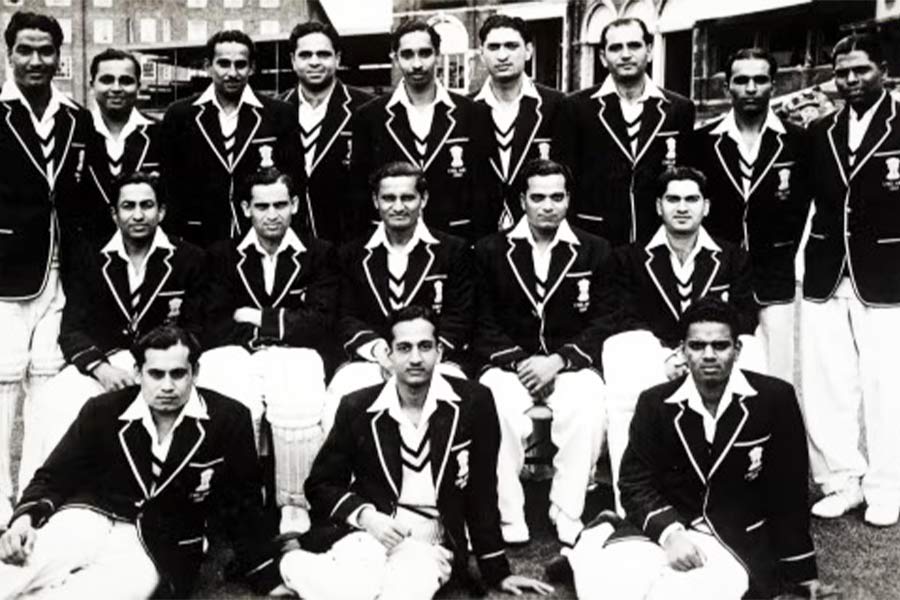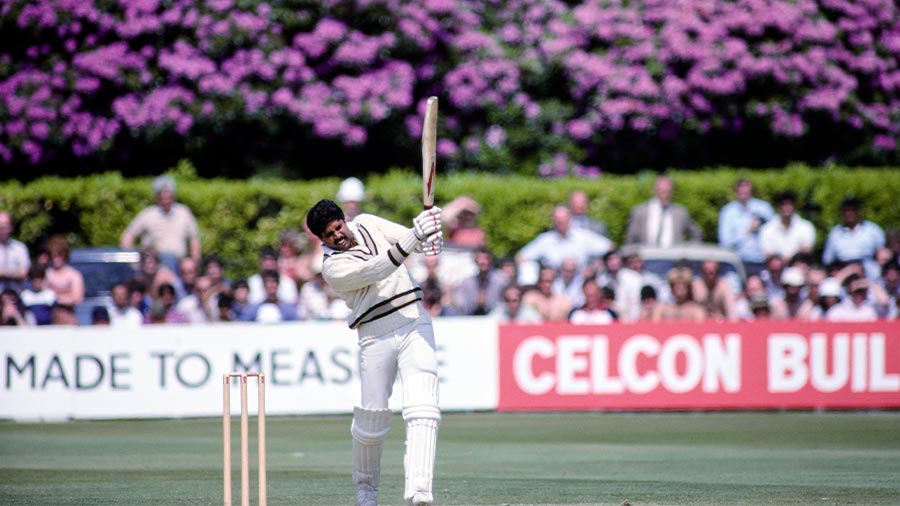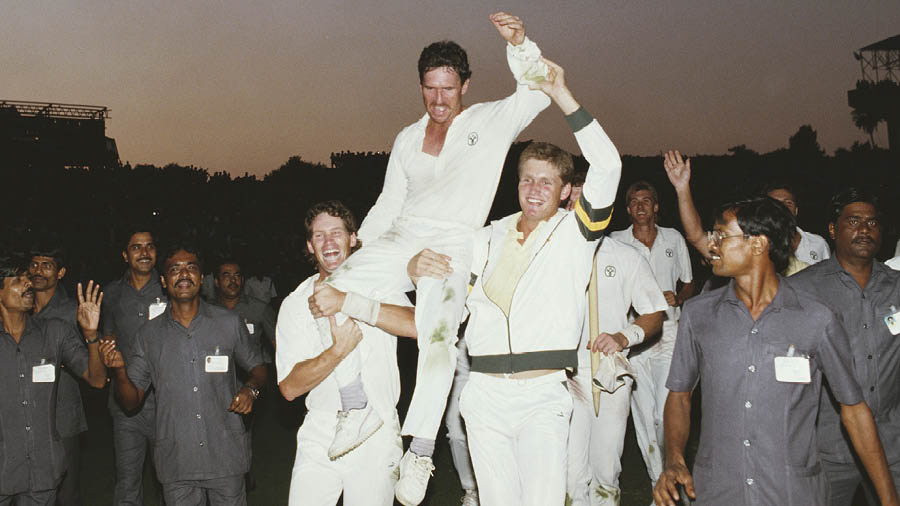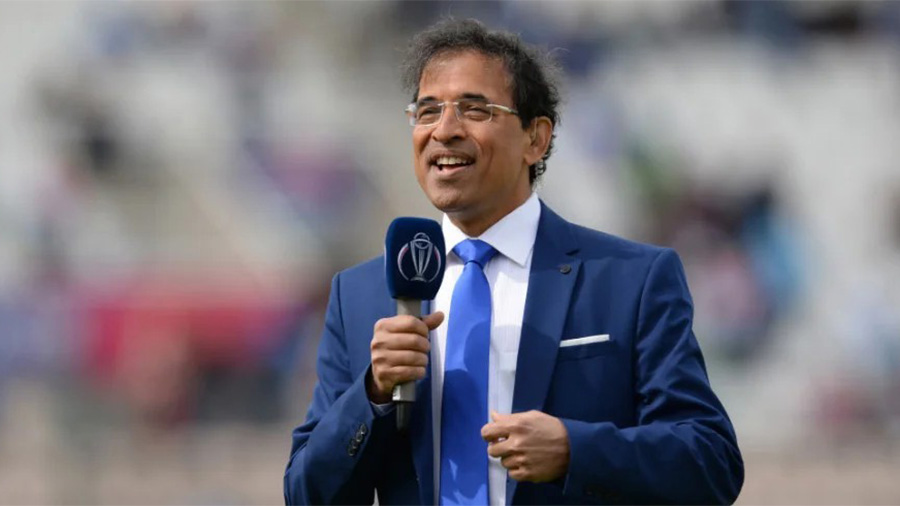Adelaide. Monday. October 27, 1947. For the first time, a Cricket XI from independent India is playing international cricket. The team, led by the redoubtable Lala Amarnath, is on its first-ever tour of Australia.
It is Day 3 of the tour match versus South Australia. The opposition is led by a certain gentleman named Donald George Bradman. If ever a cricketer deserved the epithet ‘run machine’, it is the Don. Now, in his 40th year, Bradman’s insatiable appetite for runs shows no sign of abating. Already in the first innings of this match, he has helped himself to 156 – almost modest by his high standards – as South Australia piled up more than 500 runs. India have responded well, Bradman’s counterpart, Amarnath, batting magnificently for 144. Now the second innings of South Australia is underway.
Vinoo Mankad, quickly establishing himself as an all-rounder par excellence, makes an early breakthrough, getting opener Reginald Craig stumped for 24. Out steps the Don, no doubt in the mood for another big one. He had made his way to 12 when the unthinkable happened. Mankad got the Don playing and missing at one. For a brief moment, the great man’s back leg stretched out.
Like a flash, the diminutive figure behind the stumps removed the bails and appealed to the square leg umpire. Even as the Don looked on with incredulity, the umpire raised his finger. The Don looked at the boyish face, jubilation writ large all over it, shook his head briefly and then departed but not before commending the young man on his smart glove work.
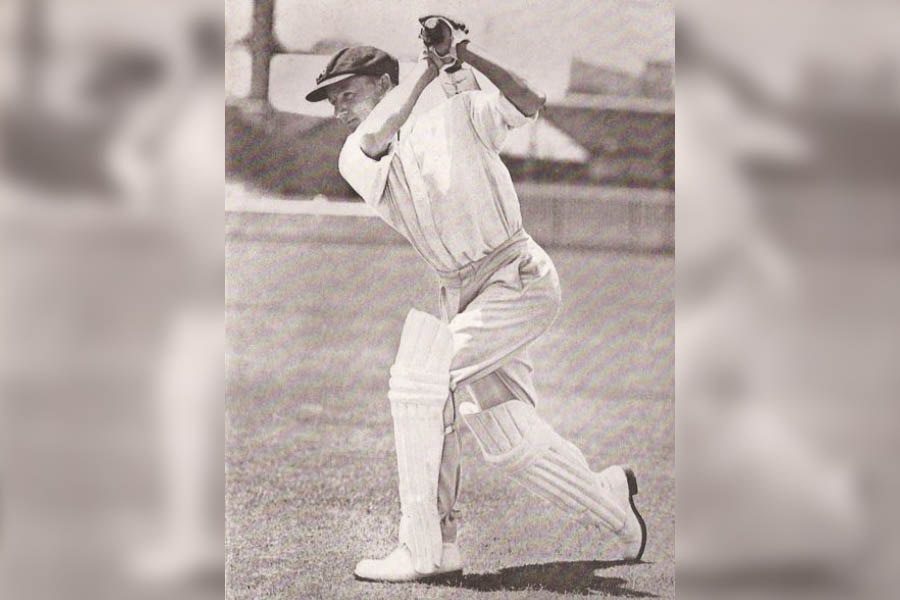
Sir Don Bradman in action
At this point, you may be wondering what the big deal with a stumping is. And normally, it wouldn’t be. But one data point stands out. The Don walked out to bat 80 times in Test match cricket and was dismissed 70 times. Not once was he ever stumped. In first-class cricket, Bradman was dismissed 295 times. Only on 11 occasions, was a wicketkeeper able to catch him short of the crease.
The young man had indeed pulled off something remarkable and rare. It would put him in a one-man club: the only Indian keeper to stump the great Don Bradman. His formal name was Probir Sen. But in an acknowledgement of his boyish looks and short stature, it was his daak naam (pet name) Khokon by which Indian cricket knew him better.
The tour of Australia in the winter of 1947 was supposed to be made by the all-India cricket team – the last one by a team from the undivided nation. But with the British government deciding to pre-pone Indian Independence and Partition from 1948 to 1947, the plans went awry. So, as the sub-continent was being cut up as per Radcliffe’s plans and two new nations were emerging on the world map, a training camp was taking place in Poona, where Lala Amarnath was present, likely discussing plans to counter the great Don, all the time worrying about the carnage unfolding in his hometown Lahore. Meanwhile, a young Fazal Mahmood journeyed from Lahore to Poona, both in undivided India but by the time he was to return, the two cities were in two different countries.
Despite all the last-moment hiccups, eventually, the team flew off in time, minus some key personnel – prominent among them the originally announced captain Vijay Merchant who pulled out due to fitness issues and Fazal Mahmood who would go on to become a legend of Pakistan cricket. Khokan Sen, barely out of his teens, was selected as the reserve to first choice keeper Jenny Irani. On a tour spanning in excess of four months, Sen was expected to provide some much-needed relief to Irani, by playing in some of the practice matches against Australian state sides.
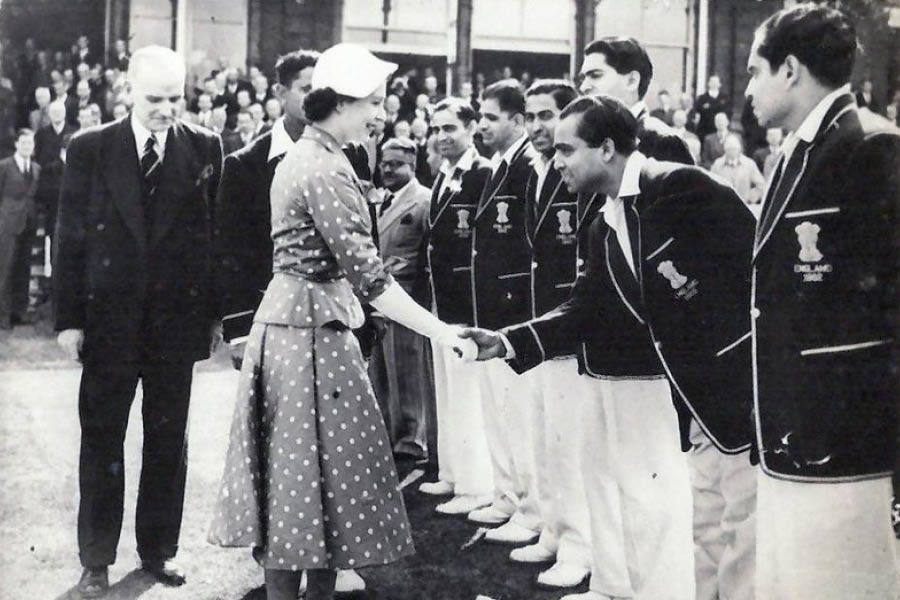
Probir Sen shakes hands with Queen Elizabeth II while on a tour of England in 1952
It was during India’s second tour match versus South Australia that Sen pulled off the stumping of Sir Don. In subsequent opportunities, he kept impressing. Meanwhile, the first Test match proved to be quite a dampener for India as they were handed an innings defeat. The second Test ended in a rain-affected draw. Irani had donned the big gloves in both the matches but had failed to make a major mark. Meanwhile, Khokan Sen had been continuously adding to his reputation in the tour matches.
As the cricketing caravan moved to Melbourne for the third Test, the big moment arrived. On the first day of 1948, Probir Sen from Calcutta’s Alipore was handed the coveted India cap, becoming the first Bengali Test cricketer. His first bow was quietly impressive. Don duly made a century as Australia batted first and scored nearly 400. Sen was nearly flawless behind the stumps, conceding just one bye in 94.1 overs (1 over = 8 balls*) of keeping while also stumping Ron Hamence off Amarnath’s bowling. Although the match didn’t go well – India losing by 233 runs – Sen had done enough with his glovework to retain his place in the Starting XI.
The fourth test at Adelaide was a tough experience. Don hit a double century as Australia racked up a monumental 674. Sen kept wickets for nine-and-a-half hours, spanning 151.3 overs*. His glovework remained exceptional as only eight byes were conceded. India suffered another innings defeat although Vijay Hazare created history by becoming the first Indian to make centuries in both innings of a Test match. The last Test match, played again in Melbourne, found Sen once again at his brilliant best. He was exceptionally tidy, conceding just four byes in 128 overs*. He also took four catches in the Australian inning, including those of Keith Miller and Neil Harvey. Indian batting once again failed to stand up to the likes of Lindwall, Miller and Bill Johnston as Australia pulled off another innings victory to take the series 4-0.
By the time the tour came to a wrap, Khokan Sen had earned plaudits from the Australian cricket writers, ex-players and audiences for his brilliant glovework. The pinnacle was reached when Bert Oldfield, the great Australian keeper from before WWII, offered the young Bengali a pair of his old gloves as a gesture of appreciation for his exception work behind the stumps. A young man who wasn’t even expected to feature in the Playing XI returned with his reputation enhanced significantly.
* Till the late 70s, Australia used 8-ball overs


